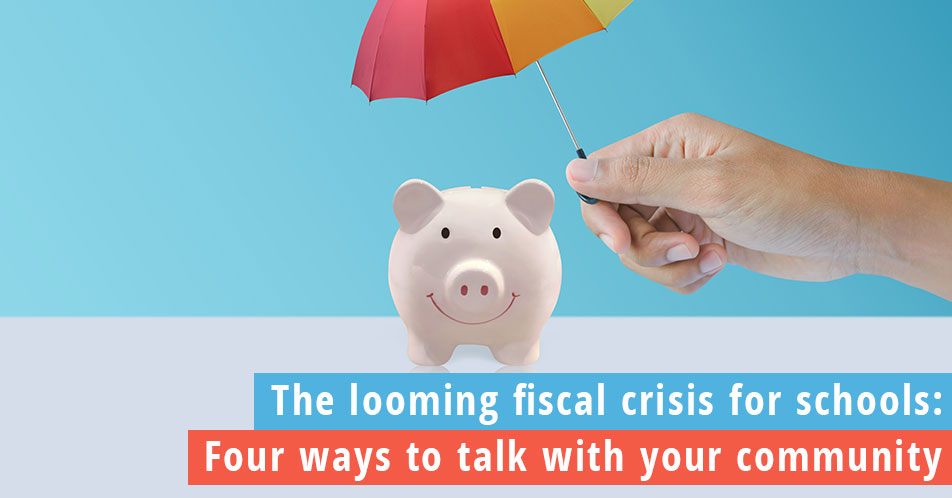How can schools position themselves for effective communication with the looming fiscal crisis?
This is our second episode in a 2-part series on the looming fiscal crisis for schools. In the first episode, Joel Gagne and Carole Dorn-Bell discussed what school districts could learn from the 2008 Great Recession. In this second part of the series, they discuss how to position yourself to successfully communicate with your community about finances.
Joel and Carole discuss how school districts can best prepare as they work through the next phase of the pandemic.
Carole asks Joel how schools need to have the fiscal conversation with their communities.
Joel says the first thing is that schools need to be transparent.
“We don’t have all the answers, but we do know that there is a fiscal emergency coming,” Joel says. He says it positions the school district to show that this isn’t a spending problem, it’s a revenue problem. And it’s not a revenue problem of our making.
“The bottom line here is, we projected these revenues, a pandemic hit, and this is where we’re at,” Joel says.
Carole says in crisis communication it’s crucial to establish your key facts. Nobody has hard answers, but it’s important for schools to speak to what they know.
They also discuss the importance of establishing a content calendar to get consistent messaging out to the community. Schedule posts to pace the information out.
Joel warns against avoiding the conversation or kicking the can down the road for a year or two in the future.
Carole mentions that it’s important to broadcast your information on as many channels that you can. She mentions that social media usage should be strategic, and it should be only one of your many communication tools.
“Your public at large is not just your parents, it’s not just your teachers, it’s your entire community,” Carole says. “The best way to reach them is in print.”
Joel mentions that in 2008, they did something called “backpack expresses” which was a flyer that went home from K-8 students every Friday. He says that social media has replaced that.
Both Carole and Joel agree that it’s important to be strategic about communication. They warn against throwing up content for the sake of content.
They say it’s important to plan out your communication. Give your communication plan a theme, and keep going back to that plan.
Joel and Carole talk about the “Taxpayer Bill of Rights” plan that Joel implemented years ago.
“It was a way to give the community ownership to this,” Joel explains. “This wasn’t a superintendent’s plan, or a school board’s plan, this was the taxpayer’s plan. It was their bill of rights.”
He says the plan was driven by research. Polling showed that the community wanted something like this.
Carole and Joel say that there’s hope. And they say that things will get better faster if schools tackle the looming fiscal crisis for schools head on.
Carole says it’s helpful for schools to reflect back on the lessons from 2008 to decide how to engage with their communities.
“Be real and authentic when you’re talking with them,” Carole says.
If you have any topics you’d like to hear or have any questions for our team, please reach out via info@weloveschoolspodcast.com.
Read the full We Love Schools podcast episode about effective communication amid the looming fiscal crisis.
Interested in learning more about how the Allerton Hill Communications team can help your school? Contact us today.



